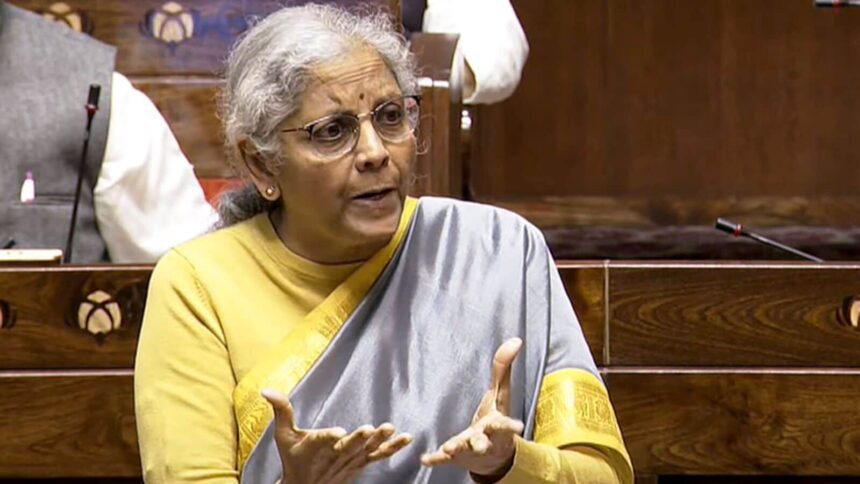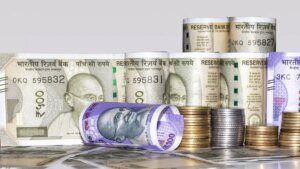Finance minister Nirmala Sitharaman on Thursday defended the tax relief measures in the Budget, emphasizing that they primarily benefit middle-income earners.
Responding to a debate in the Rajya Sabha, Sitharaman said a closer look at the tax proposals reveals that the maximum benefit applies to those earning up to ₹12 lakh, tapering off as incomes rise.
Her remarks came in response to former finance minister and Opposition leader P. Chidambaram, who accused the government of tailoring tax cuts to favour high-income earners.
“It is a completely wrong assertion that tax cut in the budget is not for the middle class but for the rich,” Sitharaman said in the Rajya Sabha.
Also read |
She explained that under the proposed measures, incomes up to ₹12 lakh receive full tax relief.
For those earning ₹24 lakh, the benefit drops to 28.82%, further declining to 9.4% for ₹50 lakh, 4.8% for ₹1 crore, 0.037% for ₹100 crore, 0.015% for ₹250 crore, and just 0.007% for ₹500 crore, she added.
Sitharaman said that the latest budget has been prepared in a challenging global economic environment and hence had kept its goals in a way that accelerates growth, secures inclusive development, invigorates private sector investments, uplifts household sentiments and also directly or indirectly, enhances spending power of the rising Indian middle class.
She pointed to the National Statistics Office’s (NSO) first advance estimates, which project India’s economy to grow by 6.4% in real terms and 9.7% in nominal terms, reinforcing the Budget’s focus on sustained economic momentum.
“In all this, we have seen that there are four groups of people that, if you touch and serve, the impact will be across the country—Gareeb, Youth, Annadata and Naari. And therefore, every scheme that we have has something to bring in terms of benefits for these four large groups,” Sitharaman said.
Capex push to continue
The finance minister rejected the Opposition’s claim that the fiscal consolidation road map in the Budget comes at the expense of reduced spending on social and strategic sector schemes or a cut in capital expenditure.
Sitharaman emphasized that the latest Budget did not reduce capital expenditure allocations.
“For FY 2025-26, the total effective capital expenditure is set at ₹15.48 trillion, accounting for 4.3% of GDP. Additionally, the Centre’s core capital expenditure is proposed at ₹11.21 trillion, or 3.1% of GDP—higher than the Budget Estimate for FY 2024-25,” she added.
Also read |
Aiming at the Opposition, Sitharaman said former finance minister Chidambaram should also advise his party’s state governments, including Karnataka and Telangana, to prioritize capital expenditure.
“Congress-ruled states are no longer spending money on capital expenditure. Under the UPA (United Progressive Alliance), capital expenditure as a percentage of total expenditure halved from 31% in FY2004, when Atal Bihari Vajpayee left, to 16% in FY2014,” she said.
Allocations rising
The finance minister emphasized that key ministries have seen increased allocations, citing ₹1.71 trillion for agriculture, ₹2.67 trillion for rural development, ₹6.45 trillion for urban development and transport, ₹2.27 trillion for health and education, and ₹4.92 trillion for defence (excluding pensions).
Responding to the Budget debate, she underscored the challenges of crafting a budget amid global uncertainty.
“I would want to underline the fact that this Budget has been made during a very difficult time. The challenges, particularly the external challenges, are very, very severe, most of which are beyond any projections or predictions,” she said.
“This immense uncertainty is still playing out, and many Indian imports, which are very critical for our economy to grow, are also going to be left with uncertainty,” she added.
Income tax bill
Earlier in the day, while tabling the new income tax bill at the Lok Sabha, Sitharaman defended the overhaul of the Income Tax Act, highlighting a significant reduction in complexity.
Siharaman said the Act has undergone 4,000 amendments since its inception, which are now under review.
Also read |
“The Income Tax Act was originally enacted in 1961 and came into effect in 1962. At that time, they had only 298 sections…But as time went by…many more sections were added. As it stands today, there are 819 sections,” she said.
“From that 819, we’re bringing it down to 536. So he should look at what it is today,” she added.
Inflation under control
Meanwhile, speaking on the issue of price rise, Sitharaman assured that the government was committed to curbing inflation and easing the burden on citizens.
India’s retail inflation fell to a five-month low of 4.31% in January, down from 5.22% in December, driven by slower food price increases, provisional government data showed Wednesday.
Retail inflation thus stayed within the Reserve Bank of India’s 2-6% target range.
Food inflation, though still high, slowed to 6.02% in January from 8.39% in December, 9.04% in November, and 8.30% a year ago.
“The prices of food will be under control,” she added.
Catch all the Business News, Politics news,Breaking NewsEvents andLatest News Updates on Live Mint. Download TheMint News App to get Daily Market Updates.
MoreLess
Rewrite this news article and keep the same structure, information and length. Only change the language used.









